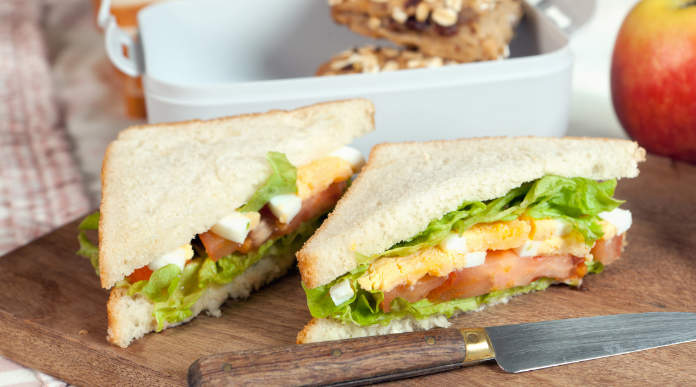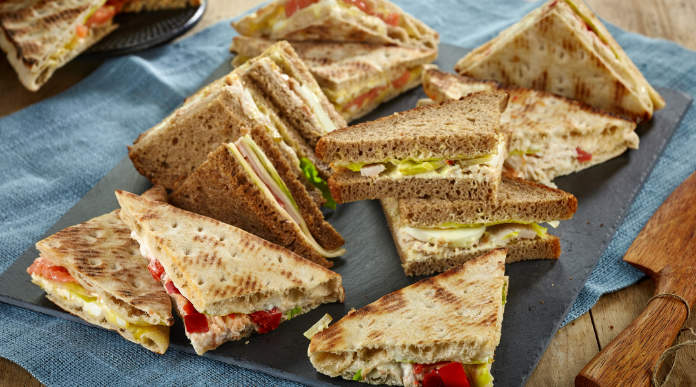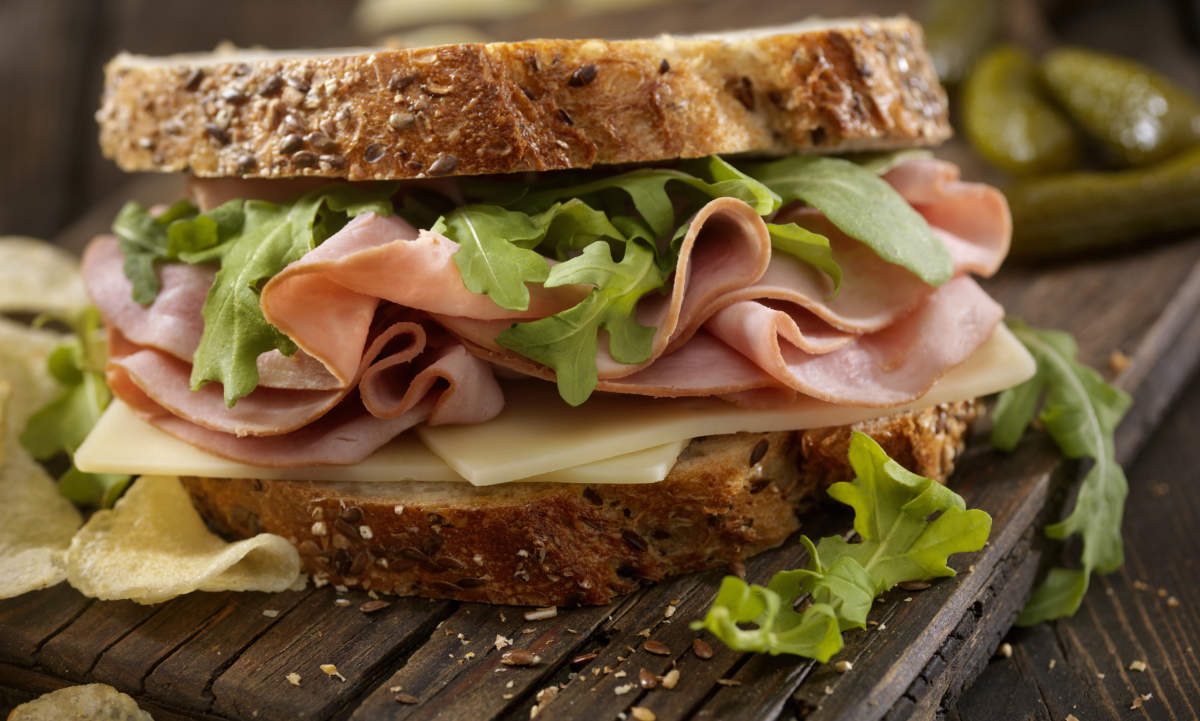How to slice a sarnie can be a contentious issue and the nation is clearly divided. Do you go for the diagonal, or slice horizontally straight down the middle, or go school packed lunch-style with squares? This age-old sandwich quandary has been settled by research for British Sandwich Week, taking place between 16th and 22nd May.
British Sandwich Week – how do you slice your sarnie?
Brits overwhelmingly go for the rectangle; #TeamRectangle represents 39% of the nation, #TeamTriangle comes in second place with 30%, and 20% of Brits are #TeamSquare.
11% of British sandwich lovers are ‘other’ – either on the fence and will flit between the two, don’t slice their sandwich at all, or opt for another shape. And 1% said they ‘don’t know’ whether they slice their sandwich or not – maybe a result of the lockdown lunch-making haze.

Age-wise, the over 35s tend to go for rectangles, with the biggest group being the 35- to 44-year-olds (44% opt for rectangles), and the younger generation (18- to 34-year-olds) prefer a triangular-shaped sarnie.
Bringing a new shape into the equation, 33% of 18 to 24-year-olds cut their sandwich into four squares – likely harking back to school lunch box days.
Regionally, 46% of people in the North East prefer a rectangular cut sandwich, closely followed by the North West with 43% of residents. Home sandwich-makers of London seem to want a square deal – as 26% of Londoners’ slice into squares.
The shape of sandwiches
Jim Winship, Director of The British Sandwich & Food To Go Association behind British Sandwich Week says: “We know there are benefits to both rectangular and triangular sandwiches – we’re not circling around the issue. The rectangle brings structural integrity, an easy-grip, no floppy corners, while the triangle is easier on the eye as you can see more of the filling, and you have more of a crustless edge to enjoy. Squares is something of a new contender and we’re happy to see new shapes being welcomed into our sandwich slicing traditions. It’s certainly a trend to watch, and it could be the start of us seeing square-cut sandwiches in shops and cafes.
“Thankfully, you can’t go wrong with a sandwich, whichever way you cut it, and we know it’s important to embrace (and consume) all shapes and sizes.
“Don’t even get us started on trapezoid-shaped sandwiches!”

Jim continues: “British Sandwich Week celebrates the sandwich in all its glory as well as the contribution that the sandwich sector makes to the economy. This year, it has the even greater aim of supporting the industry as it comes back after a year of lockdowns. Sandwiches are a British staple to be enjoyed at any time of the day, whether homemade or shop-bought. We’d encourage Brits to support their local sandwich shop, bakery, supermarket and meal deal outlet during British Sandwich Week to help the industry bounce back as lockdown restrictions gradually ease.”
Lunchtime sandwiches
Nationally, the sandwich is still the go-to lunch option for the vast majority of Brits – with 72% of spending at lunchtime going on sandwiches.
British consumers manage to munch their way through over 11.5 billion sandwiches each year. If you laid each one end to end, they would go around the world about 44 times. More than half of these were made and eaten in the home.
Well over 3.6billion sandwiches are purchased from retail or catering outlets each year and we paid over £8 billion for them – that’s as much as 475,765 brand new Vauxhall Corsas (2020’s most popular car). The average price of a sandwich is conservatively estimated at £2.20.
What is a sandwich?
The British Sandwich Association defines a sandwich as: Any form of bread with a filling, generally assembled cold – to include traditional wedge sandwiches, as well as filled rolls, baguettes, pitta, bloomers, wraps, bagels, and the like, but not burgers and other products assembled and consumed hot. Hot eating sandwiches are also included.
































































